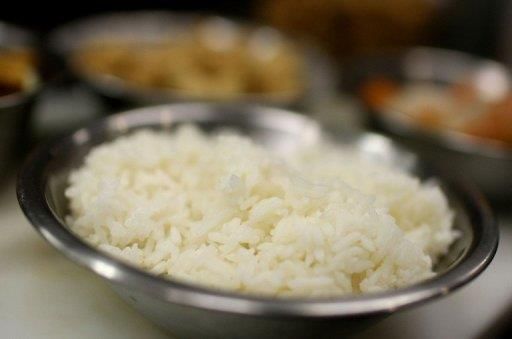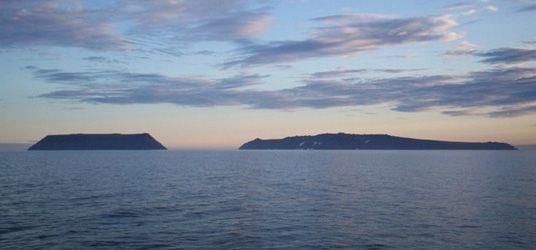UPSC Daily Current Affairs: 18th August 2025 | Current Affairs & Hindu Analysis: Daily, Weekly & Monthly PDF Download
GS1/History & Culture
A Conservation Manual, Drafted by the Ordinary Citizen
Why in News?
This discussion revolves around Prime Minister Narendra Modi's Independence Day speeches, which often urge citizens to honor the sacrifices of freedom fighters. However, these reminders tend to be symbolic and do not provide substantial means for engaging with India's complex historical landscape.
Key Takeaways
- Conservation practices in India are deeply rooted in colonial history.
- Current approaches, such as those of the Archaeological Survey of India (ASI), often lack depth and fail to engage local communities.
- Gandhi's philosophy and modern ecological insights can inform a richer conservation strategy.
- Citizen involvement is crucial for redefining heritage conservation in India.
Additional Details
- Colonial Legacies: The British legacy in conservation was driven by administrative control rather than cultural respect. This is evident in John Marshall's 1923 Conservation Manual, which still influences ASI today.
- Community Engagement: Conservation should aim to improve the lives of local communities rather than merely preserving structures. Monuments can serve as spaces for cultural exchange and community resilience.
- Translation Metaphor: Just as translators acknowledge the evolution of meaning, conservationists must recognize the need for transparency and adaptability in their practices.
- Ecological Insights: Conservation can benefit from interdisciplinary approaches, including insights from wildlife biology and economics, to view monuments as part of broader ecosystems.
In conclusion, India faces the challenge of moving beyond colonial-era conservation practices towards a more inclusive and dynamic vision. By integrating diverse perspectives and fostering citizen participation, heritage can become a living dialogue that enriches both culture and community.
GS3/Environment
Discovery of New Palm Species ‘Phoenix roxburghii’
Why in News?
A new palm species, ‘Phoenix roxburghii’, which was first described in the 17th-century botanical work Hortus Malabaricus, has recently been confirmed as a distinct species.
Key Takeaways
- The species is named after William Roxburgh, known as the father of Indian Botany.
- It is distributed across various regions including India’s eastern coast, Bangladesh, Gujarat, Rajasthan, and Pakistan.
- It can grow up to 12–16 metres, making it taller than Phoenix sylvestris.
Distinct Features
- Trunk: Solitary trunk.
- Leaves: Larger leaves and leaflets compared to other species.
- Flowers: Musty-scented staminate flowers.
- Fruits: Large, obovoid orange-yellow fruits.
Back2Basics: India’s Oil Palm Scenario
- National Mission on Edible Oils – Oil Palm (NMEO-OP) (2021): A centrally sponsored initiative aimed at increasing domestic crude palm oil (CPO) production to reduce import reliance.
- Targets:
- Expand cultivation area to 10 lakh hectares by 2025-26.
- Increase production from 0.27 lakh tonnes (2019-20) to 11.2 lakh tonnes (2025-26) and further to 28 lakh tonnes by 2029-30.
- Support Mechanisms: Includes Viability Price (VP), Direct Benefit Transfer (DBT), planting subsidy (₹29,000/ha), and special assistance for Northeast and Andaman regions.
- Cultivation States: Major production occurs in Andhra Pradesh, Telangana, and Kerala (accounting for 98% of output), with others including Karnataka, Tamil Nadu, Odisha, Gujarat, and Northeast states.
- Potential vs Current: India has a potential of 28 lakh hectares for palm oil cultivation, but only 3.7 lakh hectares are currently cultivated.
- Imports: India is the world’s largest palm oil importer (9.2 million tonnes in 2023-24), with palm oil constituting 60% of its edible oil imports, predominantly sourced from Indonesia, Malaysia, and Thailand.
- Unique Advantage: Palm oil yields are significantly higher, being 5× higher than traditional oilseeds.
UPSC 2021 Question
With reference to ‘palm oil,’ consider the following statements:
- 1. The palm oil tree is native to Southeast Asia.
- 2. Palm oil is a raw material for some industries producing lipstick and perfumes.
- 3. Palm oil can be used to produce biodiesel.
Which of the statements given above are correct?
Options: (a) 1 and 2 only (b) 2 and 3 only* (c) 1 and 3 only (d) 1, 2, and 3
This discovery not only adds to the biodiversity knowledge but also highlights the importance of palm oil in India's agricultural and economic landscape.
GS3/Environment
The Impact of Plastic Pollution on Health
Why in News?
Plastic pollution has emerged as a critical environmental crisis, drawing attention globally as discussions in Geneva involving 180 countries have failed to reach a binding legal agreement to address it. This reflects significant divisions on whether to focus on waste management alone or include production in the treaty.
Key Takeaways
- Plastic pollution now includes serious health implications, moving beyond traditional waste management concerns.
- Plastics contain over 16,000 chemicals, with limited knowledge about many of them.
- Microplastics have been found in human blood, breast milk, placenta, and bone marrow, underscoring the urgency of the issue.
Additional Details
- Global Plastic Treaty Deadlock: The recent negotiations have revealed a divide between countries focusing on waste versus those advocating for production regulations. This deadlock highlights the challenges in establishing a unified approach.
- Health Risks: Chemicals found in plastics, such as bisphenols and phthalates, are linked to various health issues including thyroid dysfunction, hypertension, and certain cancers. Studies involving over 1.1 million individuals are ongoing to further understand these connections.
- The Microplastic Menace: Defined as plastics smaller than 5 mm, microplastics are increasingly found in human biological samples, raising concerns about their potential health impacts.
- Policy Responses: Various countries, including India, have initiated measures such as bans on single-use plastics and are navigating the complexities of international negotiations regarding plastic pollution. However, health impacts are often sidelined in these discussions.
The ongoing discussions in Geneva signify a critical juncture in addressing plastic pollution. Ignoring the health risks associated with plastics creates a significant gap in policy. A comprehensive treaty that encompasses both production and health impacts is vital for mitigating the potential dangers plastics pose to human health in the 21st century.
GS2/Governance
SWAYAM Portal: Free AI Courses by the Ministry of Education
Why in News?
The Ministry of Education has launched several free Artificial Intelligence (AI) courses on the SWAYAM Portal to equip students with essential AI skills, addressing the growing industry demand.
Key Takeaways
- SWAYAM is India’s own MOOCs platform, launched in 2017.
- It aims to bridge the digital divide for students lacking access to online education.
- The courses are available free of cost and cover a range of subjects from Class 9 to post-graduation.
Additional Details
- SWAYAM Portal: SWAYAM stands for Study Webs of Active–Learning for Young Aspiring Minds. It provides an indigenously developed IT platform for hosting educational courses.
- Course Structure:All courses are interactive and consist of four quadrants:
- Video lectures
- Reading materials that can be downloaded
- Self-assessment tests through quizzes
- Online discussion forums for doubt clearance
- Certification: Learners can earn certificates upon successful course completion by registering and paying a nominal fee. Proctored examinations assess student performance, with grades potentially transferable to academic records.
- National Coordinators: Various organizations manage SWAYAM courses, including AICTE, NPTEL, UGC, CEC, NCERT, NIOS, IGNOU, IIMB, and NITTTR, each focusing on specific educational levels or fields.
- SWAYAM Plus Platform: This extension offers industry-collaborated courses aimed at enhancing employability across various sectors, including Engineering, Healthcare, and Hospitality, featuring multilingual content and AI-enabled guidance.
The SWAYAM Portal represents a significant step towards making quality education accessible to all students in India, fostering lifelong learning and adaptability in an increasingly digital world.
GS3/Economy
India’s S&P Upgrade: Drivers and the Road Ahead
Why in News?
Recently, S&P Global Ratings upgraded India’s sovereign rating from BBB- to BBB, marking the country’s first upgrade in nearly two decades. This development is significant due to the long hiatus and its extensive implications for India’s economic position, investor confidence, and global credibility.
Key Takeaways
- India’s sovereign rating has improved, reflecting enhanced economic fundamentals.
- The upgrade is expected to lower borrowing costs and improve access to global capital markets.
- India's government has actively pursued higher ratings from global agencies for better economic recognition.
Additional Details
- S&P Global: A leading international credit rating agency that evaluates the creditworthiness of governments and corporations, providing independent assessments of financial risk.
- Importance of Credit Ratings: Credit ratings gauge a country's ability to repay borrowed funds, influencing borrowing costs and investor confidence.
- India’s Economic Reforms: The rating upgrade is supported by improvements in fiscal discipline and economic growth, with efforts to reduce the fiscal deficit from 9.2% of GDP in 2020-21 to a projected 4.4% by 2025-26.
- Inflation Management: S&P praised India’s management of inflation, with the headline rate falling to 1.55% in July 2025, enhancing investor confidence.
- Global Standing: India’s new rating places it alongside countries like Greece and Mexico, indicating that while it has made progress, there are still challenges ahead to reach higher ratings.
The upgrade signals improved financial credibility for India, with immediate benefits like lower borrowing costs and a stronger rupee. However, achieving a further upgrade will require addressing the structural fiscal deficit, which poses a significant challenge in the coming years.
GS3/Science and Technology
MIT Research of Ionic Liquids (ILs)
Why in News?
Recent research led by MIT indicates that life may not be strictly dependent on liquid water. Instead, ionic liquids (ILs), which are salts that remain liquid below 100°C, could potentially support life on rocky super-Earths characterized by volcanic activity and limited water availability.
Key Takeaways
- Ionic liquids (ILs) may serve as alternative solvents for life.
- Natural processes can produce ILs, suggesting their presence on other planets.
- Research findings expand our understanding of habitability in the universe.
Additional Details
- Ionic Liquids (ILs): These are salts that are liquid at temperatures below 100°C and are composed entirely of ions. They exhibit unique properties such as being non-volatile, non-flammable, and thermally stable, making them adaptable as hydrophobic or hydrophilic.
- Electrochemical Use: ILs are recognized as excellent electrolytes with wide electrochemical windows, making them valuable in various applications including synthesis, catalysis, and electrochemistry.
- Breakthrough Findings: The study demonstrated that life might survive using ILs instead of water, with sulfuric acid and nitrogen compounds possibly forming ILs naturally. This suggests that ILs could exist on rocky super-Earths with volcanic activity and thin atmospheres.
- Significance: The findings broaden the definition of habitability beyond traditional water-based models and suggest new chemical markers for detecting life on exoplanets. The research also emphasizes the importance of exploring Venus, where ILs may play a significant role in its chemistry.
This research fundamentally alters our understanding of where life might exist in the universe, implying that there may be more planets capable of hosting life than previously believed.
GS3/Environment
Jellyfish and Their Impact on Marine Ecosystems
Why in News?
Recently, a significant nuclear power plant in France was temporarily shut down due to an unexpected issue involving jellyfish, which exemplifies the ecological challenges posed by these organisms.
Key Takeaways
- Jellyfish are resilient marine organisms belonging to the phylum Cnidaria.
- They possess a simple anatomy and unique features such as stinging tentacles and jet propulsion.
Additional Details
- Characteristics of Jellyfish:
Jellyfish are simple invertebrates that exhibit radial symmetry, allowing them to sense their environment from all directions. They lack complex organs such as brains, blood, and hearts.
- Anatomy:
Their bodies are composed of three distinct layers: the outer epidermis, a middle layer known as mesoglea that is jelly-like and elastic, and an inner layer that completes their structure.
- Ecological Impact:
Massive jellyfish blooms lead to disruptions in marine ecosystems by:
- Reducing biodiversity
- Outcompeting native species
- Collapsing fish and invertebrate populations
- Reasons for Jellyfish Blooms:
- Global Warming: Increased ocean temperatures have resulted in a surge of plankton, the primary food source for jellyfish, enabling their population growth.
- Overfishing: The removal of species like tuna and sea turtles, which prey on jellyfish, has allowed jellyfish populations to thrive unabated.
- Plastic Pollution: Jellyfish's ability to tolerate low oxygen levels in polluted waters has further facilitated their population increase.
Overall, the presence and proliferation of jellyfish represent both a unique biological phenomenon and a serious ecological challenge, highlighting the intricate balance within marine environments.
GS3/Environment
India to Launch First Sustainable Aviation Fuel Plant
 Why in News?
Why in News?
The Indian Oil Corporation (IOC), the largest refiner and fuel retailer in India, is preparing to initiate commercial production of Sustainable Aviation Fuel (SAF) at its Panipat refinery by December 2025. This facility has recently been certified for the production of biofuel from used cooking oil (UCO). By the end of the year, IOC aims to achieve an annual production capacity of 35,000 tonnes of SAF, sourcing raw materials from large hotel chains, restaurants, and food companies that typically discard cooking oil after its first use. This development represents a crucial advancement in India’s green aviation initiative, contributing to a transition towards cleaner energy and reducing reliance on traditional jet fuel.
Key Takeaways
- IOC is set to produce 35,000 tonnes of SAF annually by 2025.
- The facility is certified to manufacture biofuel from used cooking oil.
- This initiative is part of India’s broader green aviation strategy.
Additional Details
- Sustainable Aviation Fuel (SAF): SAF is a bio-based alternative to conventional jet fuel, derived from renewable feedstocks such as used cooking oil, agricultural residues, and non-edible crops.
- SAF is a “drop-in fuel,” allowing it to be blended with existing jet fuel and used in current aircraft without requiring modifications.
- International aviation bodies certify blending limits (typically up to 50%) to ensure safety and performance.
- Environmental Benefits: 100% SAF can reduce greenhouse gas emissions by up to 94%, depending on the feedstock and production technology.
- Economic Opportunities: The initiative creates new markets for farmers through non-edible crops and waste collectors for used cooking oil.
- Export Potential: European airlines are expected to be primary buyers of IOC’s SAF, with plans to tap into global export markets as demand increases.
- Regulatory Compliance: Starting in 2027, airlines must offset emissions beyond 2020 levels, making SAF blends a key compliance method.
IOC's SAF plant will initially meet India's 1% SAF blending target for international flights by 2027, as set by the National Biofuel Coordination Committee (NBCC). The committee has indicated targets of 1% blending in 2027 and 2% in 2028. As the market matures, domestic SAF blending is expected to follow after international targets are established. However, challenges such as UCO collection from small eateries and high production costs remain. Additionally, while IOC is starting with UCO, the company is also exploring alcohol-to-jet (ATJ) technology for sustainable fuel production.
GS3/Science and Technology
Chalkiness in Rice and the Genetic Breakthrough
 Why in News?
Why in News?
Recently, Chinese scientists made a significant discovery by identifying a crucial gene known as Chalk9 that regulates chalkiness in rice. This breakthrough could greatly enhance crop improvement efforts.
Key Takeaways
- The Chalk9 gene is located on chromosome 9 of rice.
- It encodes an enzyme called E3 ubiquitin ligase that plays a critical role in protein degradation.
- There are two variants of the Chalk9 gene: Chalk9-L and Chalk9-H.
- Chalkiness affects the grain quality of rice, impacting its commercial value and milling recovery.
Additional Details
- Chalk9-L Variant: This variant promotes the degradation of OsEBP89, a regulator of starch-synthesis genes, leading to reduced starch accumulation and resulting in low chalkiness and translucent grains.
- Chalk9-H Variant: In contrast, this variant is less effective at degrading OsEBP89, causing starch buildup, which results in high chalkiness and brittle grains.
- The discovery of Chalk9 provides a direct genetic tool for reducing chalkiness in rice, making it advantageous for breeding programs aimed at producing premium low-chalk rice.
- This genetic solution has the potential to improve farmer income and enhance food security, meeting consumer demand for better quality, translucent rice varieties.
This breakthrough in understanding the Chalk9 gene not only aids in rice breeding but also holds the promise of bolstering the agricultural economy and ensuring food security.
GS2/International Relations
India Redefines Engagement with Africa in Namibia
 Why in News?
Why in News?
Prime Minister Narendra Modi's address to Namibia’s National Assembly in July highlighted a culturally rooted approach to diplomacy, demonstrating a shift from traditional Western methods of engagement with African nations.
Key Takeaways
- Modi's visit emphasizes a culturally sensitive diplomatic style, contrasting with Western conditional aid approaches.
- India's three-step logic in engaging Namibia includes shared history, ongoing cooperation, and future collaboration.
- Namibia's political stability and resources make it a strategic partner for India.
- Modi's visit resulted in agreements on entrepreneurship, health, and Namibia's accession to international coalitions, though more could be achieved.
Additional Details
- Shared History: India recalls its support for Namibia’s liberation struggle, reinforcing its image as a long-term partner.
- Current Cooperation: Ongoing trade is modest at $800 million but is backed by a $12 billion Africa-wide development partnership.
- Future Road Map: India's strategy includes knowledge-based cooperation, exemplified by Namibia adopting India's Unified Payments Interface (UPI).
- Modi's visit, while symbolically important, yielded modest outcomes including two MoUs and participation in global coalitions.
- Discussions on critical minerals, essential for India’s low-carbon supply chains, did not result in concrete agreements.
- India's diplomatic approach fosters trust through inclusive dialogue and respect for African priorities, distinguishing it from Western transactional methods.
In conclusion, while India’s engagement with Namibia presents a promising model of trust-based diplomacy, its credibility will hinge on consistent follow-through, strategic investment, and sustained commitment to partnerships.
GS3/Environment
What is Halman Apricot?
Why in News?
Recently, a shipment of 1.5 metric tonnes of Halman apricots has been exported to Saudi Arabia, Kuwait, and Qatar, marking a significant milestone for this unique fruit.
Key Takeaways
- Halman apricot is a variety of apricot (Prunus armeniaca L.) that is indigenous to Ladakh.
- This apricot variety is renowned as one of the finest in the world.
Additional Details
- Origin: The Halman apricot was introduced to Ladakh over a century ago, believed to have come from China or Central Asia.
- Distribution: It thrives in various regions of Ladakh, especially in the Sham area, with notable abundance in villages such as Dha-Hanu, Garkhon, Skurbuchan, Domkhar, Wanla, Khaltse, and Timosgang.
- Cultural Significance: The apricot is cherished for its rich flavor and versatility, playing an essential role in Ladakhi cuisine, traditional medicine, and festive rituals, thus forming a vital part of the region's agricultural heritage.
- Nutritional Benefits: Halman apricots are a rich source of essential vitamins, including Vitamin C and Vitamin E, as well as minerals like potassium, magnesium, and iron. They also provide dietary fiber and antioxidants, contributing to overall health.
The Halman apricot not only represents a unique agricultural product of Ladakh but also showcases the region's rich cultural and nutritional heritage.
GS2/International Relations
Key Facts about Bering Strait
 Why in News?
Why in News?
Recent studies indicate that mariners in the Bering Strait are adhering to the 2018 shipping guidelines, reflecting a form of U.S.-Russia cooperation, even amidst challenging political relations.
Key Takeaways
- The Bering Strait is the northernmost part of the Pacific Ocean, separating Asia and North America.
- It connects the Bering Sea to the Chukchi Sea of the Arctic Ocean.
- At its narrowest point, the strait is only 85 km wide, with the U.S. and Russia situated close to each other.
Additional Details
- International Boundary: The international boundary between the U.S. and Russia runs through the Bering Sea and Strait.
- Geographical Features: The strait is relatively shallow, with an average depth of 50 meters and includes several islands such as the Diomede Islands and St. Lawrence Islands.
- The two Diomede Islands are positioned in the center of the strait, with Big Diomede belonging to Russia and Little Diomede to the U.S.
- The International Date Line runs between these islands, resulting in different calendar days for the American and Russian sides.
Overall, the Bering Strait serves as a significant geographical and political landmark, reflecting both cooperation and division between the U.S. and Russia.
|
44 videos|5271 docs|1113 tests
|
FAQs on UPSC Daily Current Affairs: 18th August 2025 - Current Affairs & Hindu Analysis: Daily, Weekly & Monthly
| 1. What is the significance of discovering the new palm species 'Phoenix roxburghii'? |  |
| 2. How does plastic pollution impact human health? |  |
| 3. What are the benefits of the SWAYAM portal for learners? |  |
| 4. What factors contributed to India's S&P upgrade? |  |
| 5. What is the role of jellyfish in marine ecosystems? |  |
















